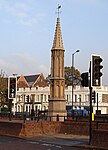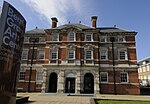The John Loughborough School
The John Loughborough School was a Christian, Voluntary aided school in Tottenham, London in the United Kingdom. It was operated by the Seventh-day Adventist church. The school was named after John Norton Loughborough, an early Seventh-day Adventist minister. The John Loughborough School was opened in April 1980 as an independent school. It joined the state system as a grant maintained school in September 1998, converting to voluntary aided status in the following year.In 2013 Haringey London Borough Council decided to close The John Loughborough School. Reasons for the closure included low pupil attainment and a decline in pupil numbers at the school. Although the school appealed the decision, the closure was confirmed and pupils left the school for the final time at the end of the 2013 Summer term.
Excerpt from the Wikipedia article The John Loughborough School (License: CC BY-SA 3.0, Authors).The John Loughborough School
Holcombe Road, London Tottenham (London Borough of Haringey)
Geographical coordinates (GPS) Address Nearby Places Show on map
Geographical coordinates (GPS)
| Latitude | Longitude |
|---|---|
| N 51.5931 ° | E -0.0671 ° |
Address
Holcombe Road 27
N17 9AS London, Tottenham (London Borough of Haringey)
England, United Kingdom
Open on Google Maps









